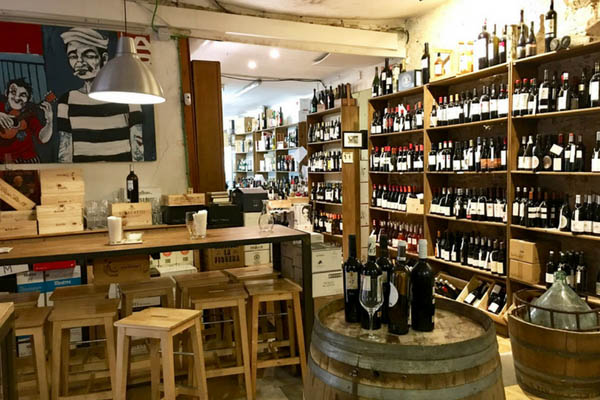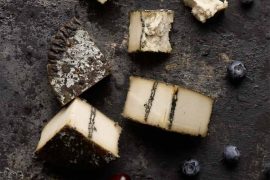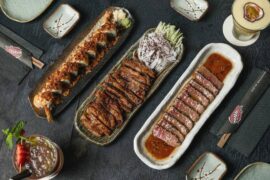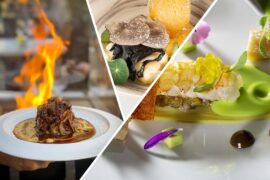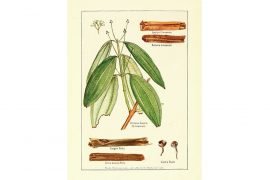[dropcap letter=”G”]
OOSE NECK BARNACLE or PERCEBE
Like a small, half fossilized marine tree. Or like the black stocking of an ocean elf with a pointed stone instead of a foot. The goose neck barnacle is a shellfish of Martian appearance and marine savour, which condenses the entire Atlantic in its ductile flesh in a brief wave in two bites. A wave at once salty and warm; tasty, concise and unique. Its prehistoric appearance generates wide open eyes and a questioning approach by the novice epicure. “How do you hold this?”. “What part do you eat?”. And, above all: “how do you get to it?”. The trick is to pull the tip and the stalk in opposite directions, drawing a downward arch at the same time, like cracking open an egg shell and pouring out the inside. And why so complicated, if all you want to do is strip the barnacle flesh from its marine outer fabric? Wouldn’t it be good enough just to pull? Enough, no doubt, but the marine splash produced by opening the barnacle would be superlative. Pointing the spurt towards the plate will prevent the sea and all its juices from ending up in your hair, as well as on your palate.

Percebes are expensive, complicated and small. Is it worth the trouble? Definitely. Because in its savour is the warmth of the kitchen and the chill of the ocean; the smell of the low tide, the stroke of the sea foam, the graded colour of the sunset and the intensity of the beaten rock. Percebes taste like a storm in the heat of the stove in a stone house. Regarding the price, the goose neck barnacle is expensive because it must be: collecting them is a way of life that puts you face to face with death every day. Each percebe on the table has been extracted by the cold, wet, brave hands of a percebeiro or percebeira: marine tightrope walkers, water escapists, rock surgeons who, watching out of the corner of their eyes and their ears listening for the sea lurking up behind them, extract each individual manually in the brief impasse that the ocean gives them between one wave and another. Percebes are expensive because it would be the end of the road if they were not.
The goose neck barnacle should be boiled in salt water for a couple of minutes with a dancing laurel leaf and, very importantly, should always be eaten warm. The percebe, like the bride, must never be made to wait. It should always be waited for.
SPINY SPIDER CRAB or CENTOLA & VELVET CRAB or NÉCORA
Eating spider or velvet crab is to award your palate and amuse your hands. You are given permission to play with your food in a battle of strategy before hairy and spiky mythological crabs, huge pincers and bulging eyes. It’s using tools and jaws to overcome a labyrinth of shell and carapace to conquer their tasty white meat. It is licking your fingers in public, with pleasure and without shame.
Because of their size, spider crabs are more imposing, and usually reach the table with the struggle half fought, with the body open in two halves: the upper half, placed upside down like a bowl with the juices inside. The lower part, divided in halves or in quarters. Next to that, the two pincers and the eight legs—as long as they have not lost any in a skirmish—previously cracked open to make work easier. Although the order of the factors does not change the product, you usually begin with the legs, followed by the abdomen, and end up enjoying the intense flavours of the broth in relaxed spoonfuls, as in a late-night snack at the end of party. With the velvet crab, the game is similar, more meticulous and brief because of its size, only it is often the players themselves who must open it to begin the game.
 King crab tastes of fresh fumet and sea meat. The pulp of its legs and abdomen is intense and frays easily, unlike the more elastic and rubbery texture of its lesser cousin, the brown crab. The broth, reserved in its shell, is salty and lumpy, reminding you of sea urchin and is like a stew of marine adventures recalling waves, lobsters, algae and molluscs akin. The nécora is somewhat softer on the palate because its smaller body accommodates fewer adventures. Perhaps for this reason, dining upon these can be a good introduction to the subtleties of crustacean flavours.
King crab tastes of fresh fumet and sea meat. The pulp of its legs and abdomen is intense and frays easily, unlike the more elastic and rubbery texture of its lesser cousin, the brown crab. The broth, reserved in its shell, is salty and lumpy, reminding you of sea urchin and is like a stew of marine adventures recalling waves, lobsters, algae and molluscs akin. The nécora is somewhat softer on the palate because its smaller body accommodates fewer adventures. Perhaps for this reason, dining upon these can be a good introduction to the subtleties of crustacean flavours.
When it comes to choosing specimens, gender counts, as does origin. There are centolos and centolas and, as in the case of velvet crabs, females are traditionally preferred in cuisine. The Galician ones are better than the foreigners: fresher, tastier and more intense to the palate. And, although they may also be more expensive, for one time you eat them, it’s worth choosing well. To the naked eye, they can be differentiated by their fresh colour—much browner and darker than the foreign ones—and by the surface of their carapace—which is hairier and darker, and usually has algae attached. But, above all, because they cannot be bought all year round since Galician shellfish catch is regulated by seasonal bans. Galician nécoras are fished from July to December and, centolas, from November to June.
All of them go into the pot a brownish colour and come out saffron. All are bathed in boiling water with salt and laurel and, after resting on ice, are brought to the table cold, so you do not have to fight against time to taste them at their best. They are all eaten alone, with no other company than a good wine. Why camouflage what shines out of its own
ST JAMES’ SCALLOP or VIEIRA & VARIEGATED SCALLOP or ZAMBURIÑA
In Galicia, the vieira Saint James’ scallop is much more than shellfish. It is the symbol of the Way of St. James, the bowl with which the traveller drinks from the streams, the mark that guides the pilgrims to the Obradoiro—the final destination of the Way of St. James before the Cathedral of Santiago de Compostela . The St. James’ scallop shell is even the percussion instrument with which the traditional Galician music makes its distinct “clip clop”, although as a musical instrument it receives the artistic name of cuncha.
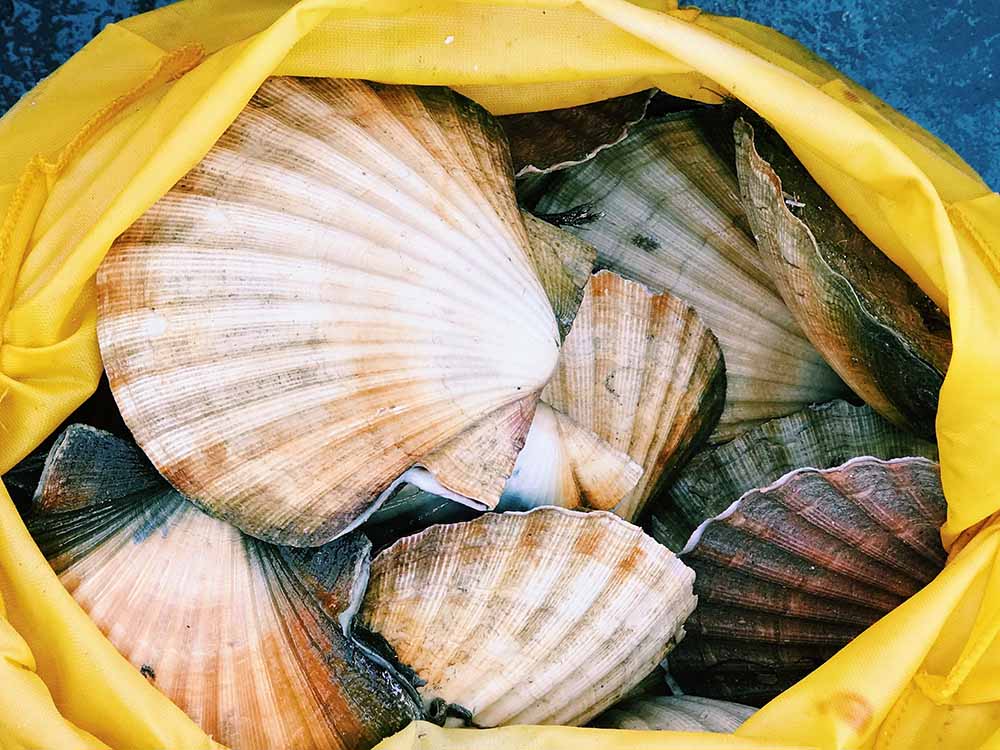
The scallop is served in its shell with onions and sliced ham and grilled in the oven with a gratin of bread crumbs. It is the only shellfish that should not be bought fresh, but frozen or packaged, because its hepatopancreas and soft tissues accumulate a toxin that must be properly extracted for it to be safe to eat.
The zamburiña variegated scallop, however, is best griddled. Intense in flavour and tender in texture, it almost melts in the mouth like candy floss. With its more elastic meat, the vieira’s revels in the kitchen party, the zamburiña doesn’t likes to be complicated: a splash of oil and a pinch of salt on a hot griddle, a few minutes and it’s done. Hot, tasty, cheerful and oceanic, zamburiñas are as great as terrace appetizers as at the epicure’s table. It makes the Atlantic Mediterranean and never ever disappoints.

